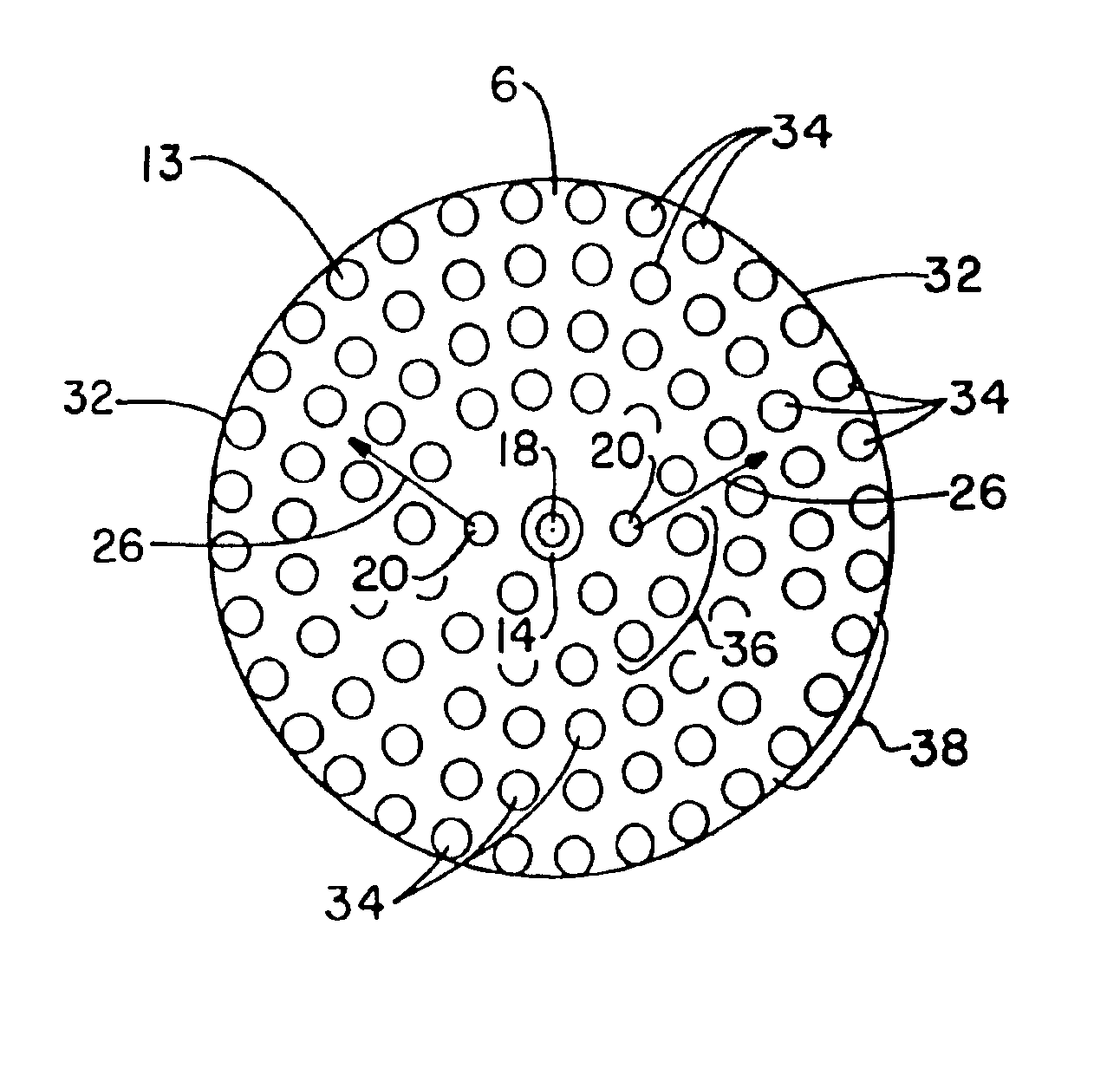Electrochemical apparatus with reactant micro-channels
a microchannel and reactant technology, applied in the field of fuel cells, can solve the problems of premature combustion and loss of active anode area, failure to control gas flow rate or pressure distribution, damage to the cell, etc., to improve the overall cell reactant balance, enhance the distribution of reactant to the cell, and reduce the complexity of stack components
- Summary
- Abstract
- Description
- Claims
- Application Information
AI Technical Summary
Benefits of technology
Problems solved by technology
Method used
Image
Examples
Embodiment Construction
Although applicable to other types of electrochemical apparatus, for purposes of this description the invention will be described in relation to its incorporation into a solid electrolyte (oxide) fuel cell as described in U.S. Pat. No. 5,445,903, incorporated by reference as if reprinted herein. The electrochemical apparatus 1 of one embodiment of the present invention is represented in FIG. 1, which shows a schematic exploded view of one preferred embodiment of a solid-oxide fuel cell 2 and a stack of two such cells 4.
A cell 2 generally comprises four stacked layers: a separator 6, a cathode layer 8, an electrolyte 10, and an anode layer 12. Cathode layer 8 and anode layer 12 may be referred to in the general sense as electrodes 13 and in a preferred embodiment at least one such electrode is comprised of a unitary (single) component as contrasted to an active electrode structure and an associated porous element. A tubular gasket 14 in a cathode layer forms a seal between the nonpor...
PUM
| Property | Measurement | Unit |
|---|---|---|
| width | aaaaa | aaaaa |
| size | aaaaa | aaaaa |
| width | aaaaa | aaaaa |
Abstract
Description
Claims
Application Information
 Login to View More
Login to View More - R&D
- Intellectual Property
- Life Sciences
- Materials
- Tech Scout
- Unparalleled Data Quality
- Higher Quality Content
- 60% Fewer Hallucinations
Browse by: Latest US Patents, China's latest patents, Technical Efficacy Thesaurus, Application Domain, Technology Topic, Popular Technical Reports.
© 2025 PatSnap. All rights reserved.Legal|Privacy policy|Modern Slavery Act Transparency Statement|Sitemap|About US| Contact US: help@patsnap.com



